Studio Devona
Studio Devona - The Art & Archaeology of Clay Tobacco Pipes
My interest in clay pipes as an amateur archaeologist and clay pipe maker are shared with you here... I began collecting clay pipes in the 1970's and since then my knowledge and appreciation of this topic has grown though I sometimes feel that I only know half of what there is to know.

On this page I hope to share some general knowledge about them. You might also find the "Society for Clay Pipe Research" a useful link to look up. They also have a facebook page too where lots of
people share their finds and ask for information and there is also a general group "Clay Tobacco Pipes" on facebook.
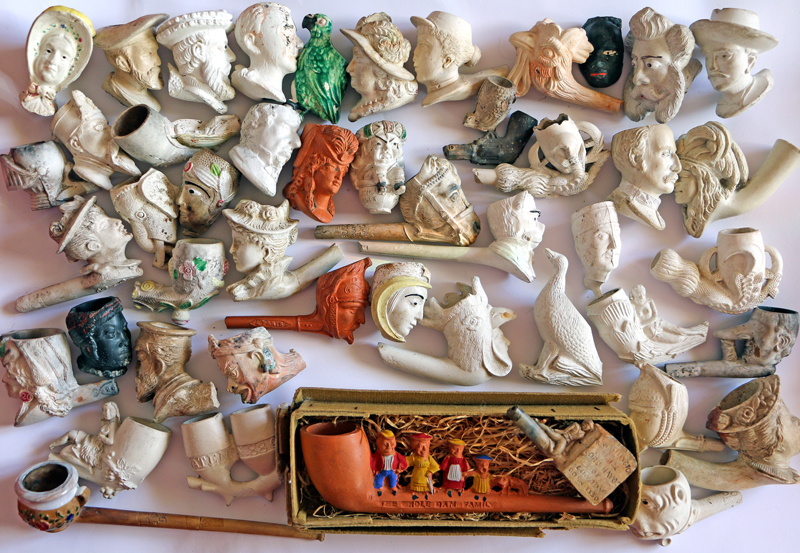
Examples of Topics within Clay Pipe Studies...
1. General clay pipe collecting.
2. Where did the origin of clay pipes and smoking them begin.
3. Where to find them in the landscape or where to buy them, their value, where to sell them.
4. How to clean, care and display them.
5. Learning about decoration themes such as: Plain styles, Abstract,
Animals, Plants, Men, Women, Famous People, Coat of Arms, Masonics, Religion, Politics, Humour, Irish Pipes, Scottish Pipes,
Birds, Insects, Musical themes, Advertising, Commemoratives, Miniatures, Bubble pipes, Skulls, Devils, Monsters, Mermaids, Giant pipes, Royalty, Military, Maritime, Sports, Transport, etc.
6. Researching the topics of cultural history including events and people in history which inspired all the design themes.
7. Learning about the smoking culture in society and how clay pipes were used within that.
8. How they were made, what methods were used and how those changed over
time. What clays were used and where they were extracted.
9. How the moulds themselves were made and the skills of engraving them.
10. The study of regional styles throughout the centuries, being able to
distinguish a Mid 18th century London pipe from one made in Bristol.
11. Pipe bowl evolution throughout the centuries relating to: Bowl size
and shape, heel/spur shapes, bore hole sizes, milling, burnishing, stem
lengths etc,
12. Makers marks throughout history - marks appearing on the bowls, heels, spur and stems.
13. What makers used to produce them: Study of local makers, family
census information, records going back to the late 16th century.
14. Researching the locations of pipe making sites which might involve professional archaeological excavations and writeups.
15. Learning about the history of the biggest mass producers in Europe
who had global exports of countless millions of pipes for decades.
16. Study of surviving clay pipe makers catalogues.
17. What types of clay pipe were made around the world and how to tell the styles from regions and countries.
18. Clay pipes discovered at sites of: Castles, Battles, Shipwrecks, Buildings etc. and the specific study relating to this.
19. Clay pipes in the USA and Canada: Native American Pipes, Trade Pipes, Imports from Europe etc.
20. Books and Other Research Material, Archaeological Reports, Specialist books on clay pipes etc.
21. How to manufacture clay pipes today.
22. I am sure I have missed some out!

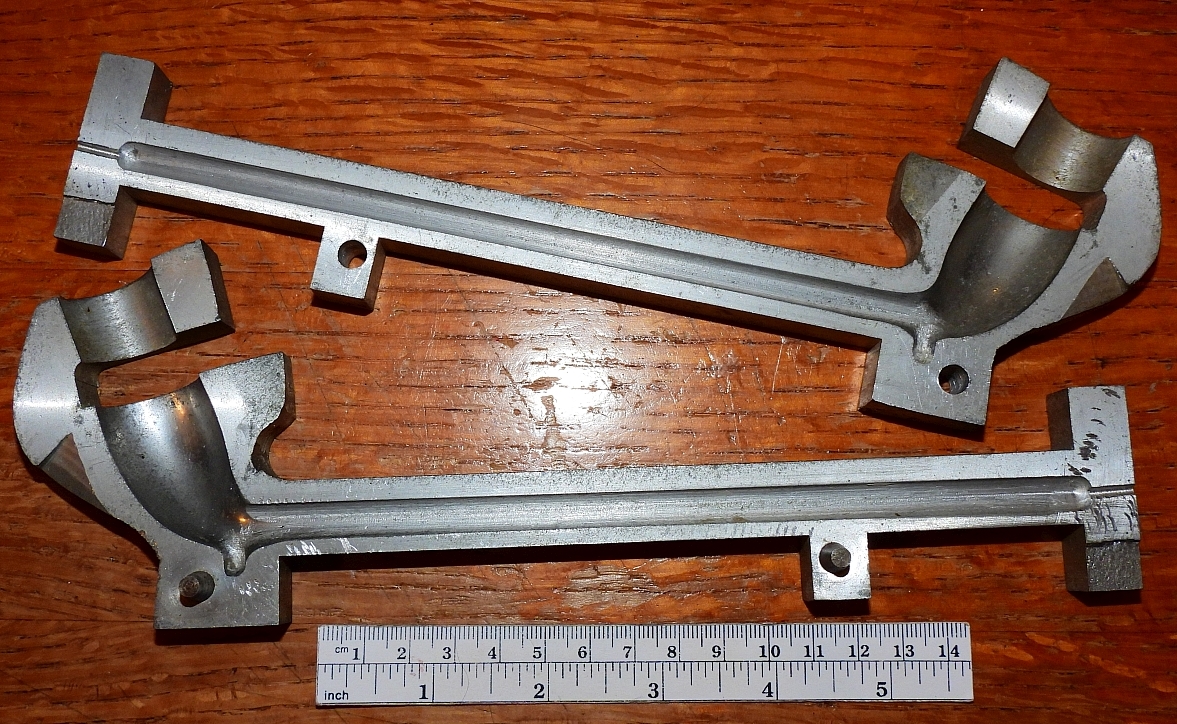
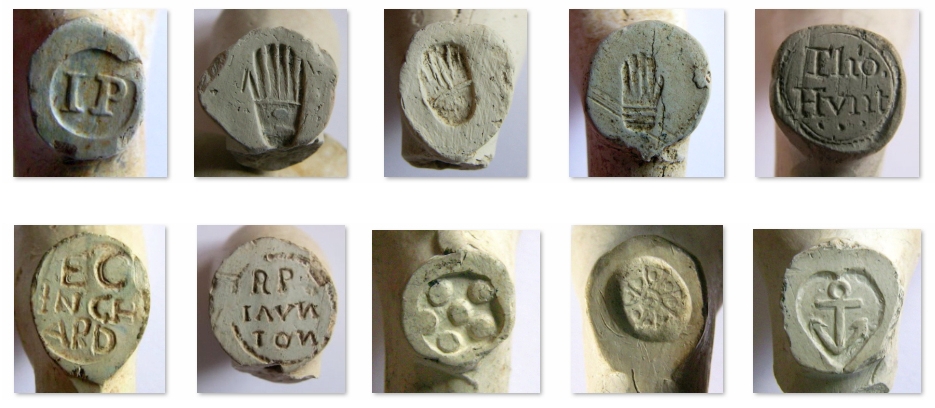
About my own interest in this topic - How it all began
My interest in clay pipes began as a
family shared hobby with siblings when I was a child. Days out often
involved exploring the villages and
countryside learning about nature and local history; and where ever
there was old looking soil we often found fragments of these broken
pipes as
well as assorted pottery which indicated that people of past times had
been active in the area. On lucky occasions I found other nice items
such as a pipe-clay
dog toy and part of a Tudor period jug handle with a woman's face. Also stone age flints and metal items.

The first finds were simply smashed pieces of pipe stem and bowl that
stood out against the darker soil. Some had small intricate patterns on
them such as leaves and flowers, parts of pictures or even
words and names. They looked almost natural in some ways with weathered
surfaces but the elegant
shapes were very eye-catching quite unlike anything else I had seen.


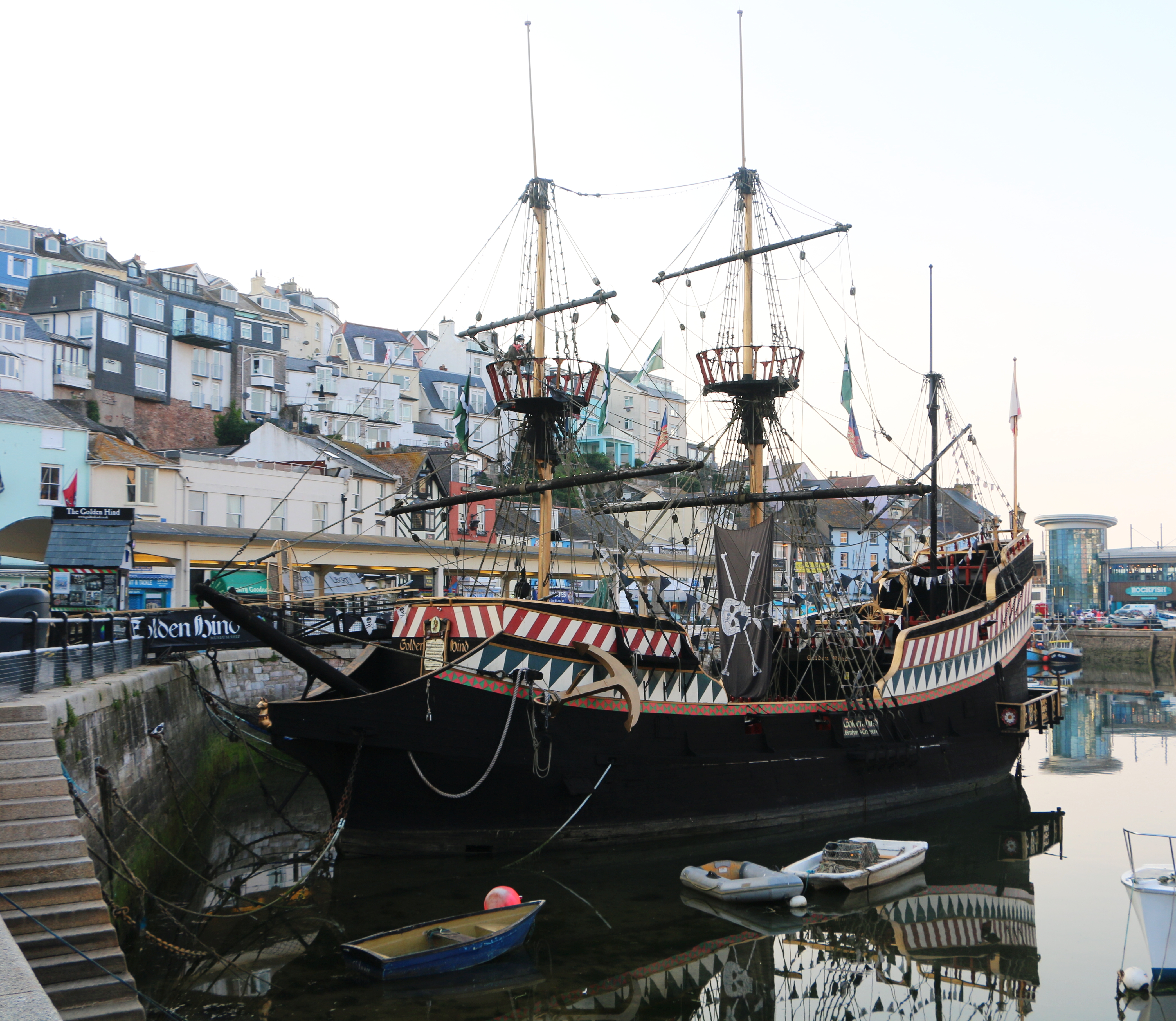

The first Clay Pipes


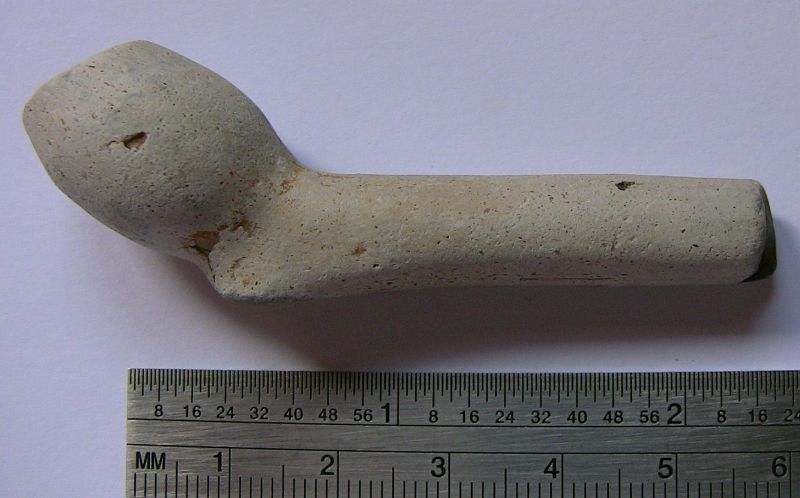
Clay Pipes c.1600-1720

The pipe on the left of this picture is an early Devon pipe made around 1610.
You can see the size of it compared with a much later 1700-1720 period Devon pipe which
is much more the modern size of a pipe bowl.

Some Typical London shapes 1580-1760

Regional English Styles c.1630-1770
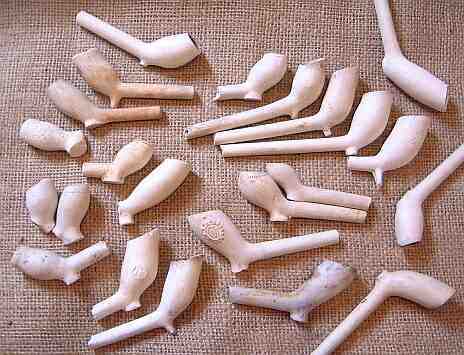
Armorial Clay Pipes c.1740-1800
These two images show very typical
"armorial" designs recovered from London. They seem to have come into
fashion around the middle of the 18th century
and the bowl shape and form of decoration is very unique. They were
copied around England but the majority of them and the best executed
designs seem to turn up
in London or major ports including Southampton/Portsmouth area.


1790-1820 style Napoleonic Period

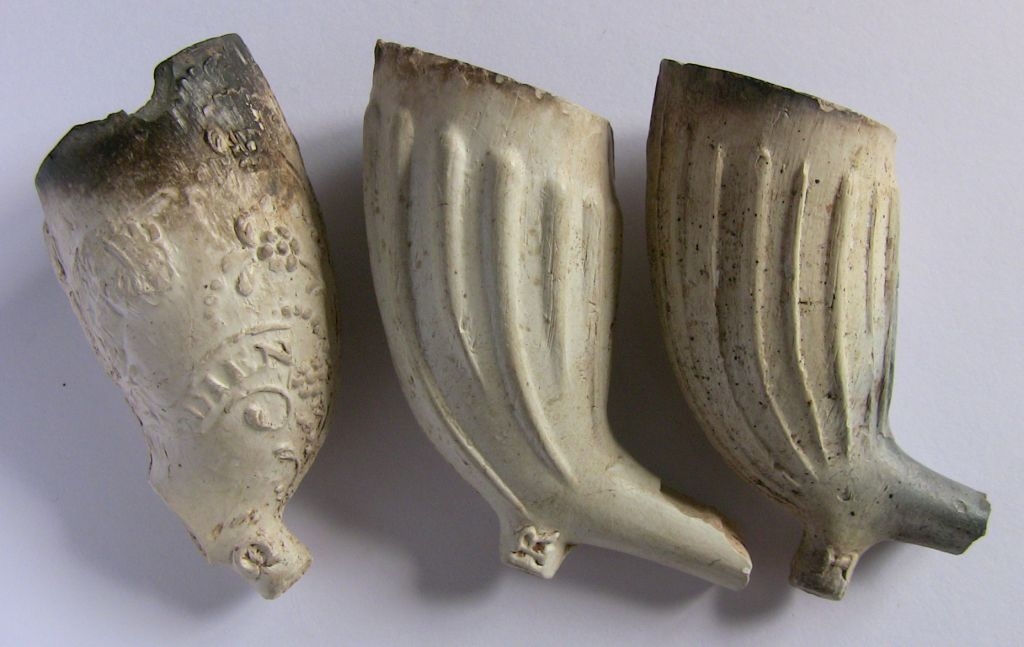
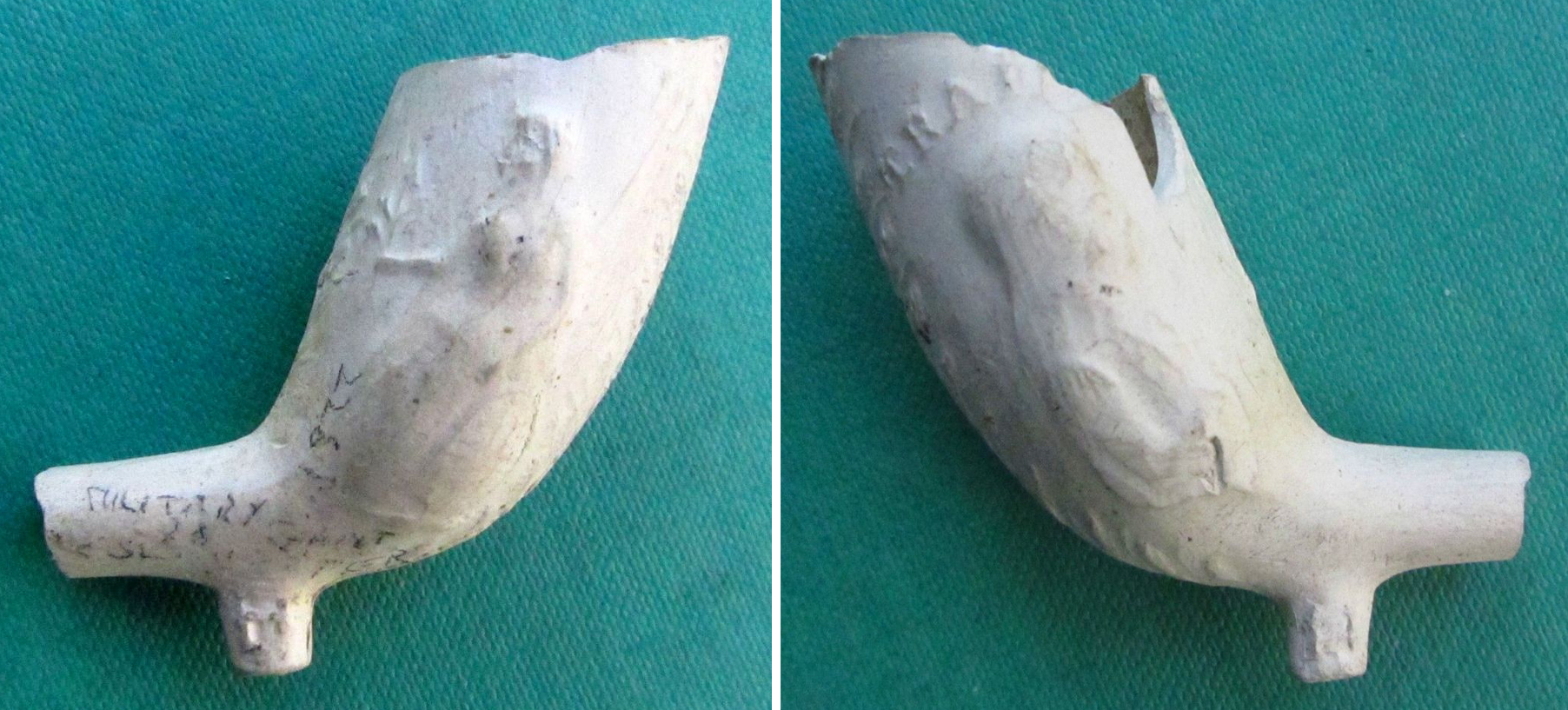
Hole sizes in Pipe Stems
English Pipes: 1650, 1800, 1850

English Pipes 1830-1860
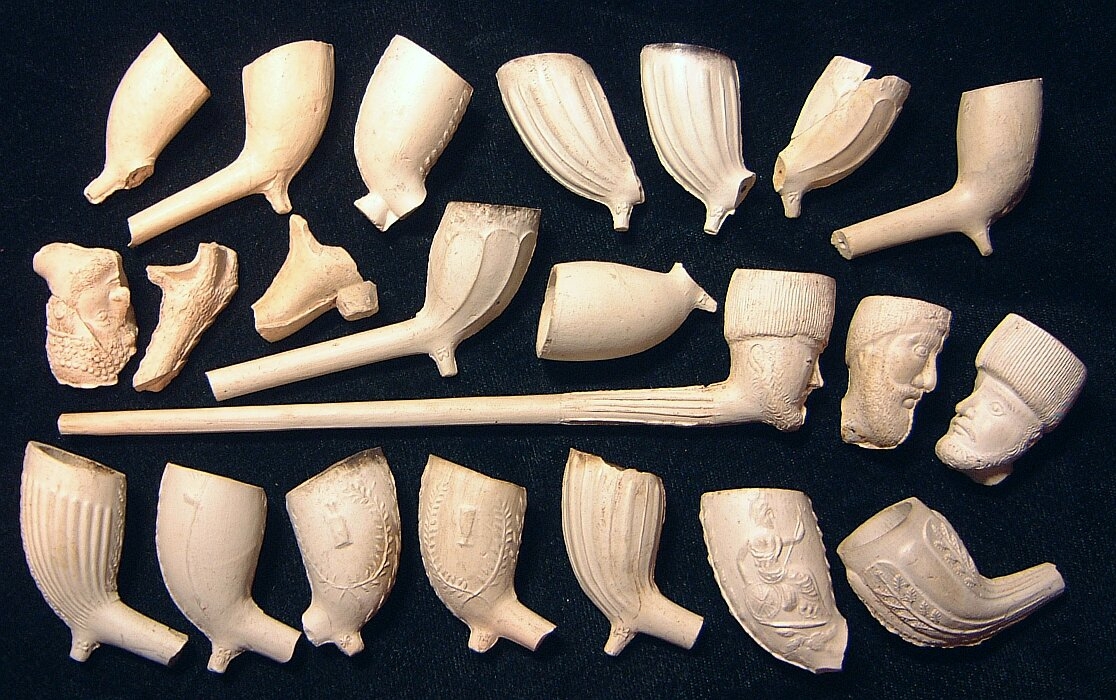

Victorian Period Fancy Pipes
All the pipes in the next two images date from c.1840 to 1930.
From about the 1790's a number of French
decided to take up clay pipe making, often copying some of the Dutch
styles of that time but also bringing in a new
form of pipe which had a bowl and a fitted stem. The French became so
good at making clay pipes that by the 1840's they were producing a vast range
of "fancy" pipes
which had a huge influence on English pipe makers and other industries
around Europe.
Pipe makers began to compete with the more exotic designs
coming in from
the continent. The English pipe industry moved into a gradual decline
again by the 1910's, not only were they competing with other countries products but
the trade in
England was also becoming more centralised with larger firms in parts of
the county taking the lead and smaller country workshops closing down.


RAOB pipes



There are so many variations of these pipes you could create a single large collection with just RAOB pipes! Some have the design on the front and some on the back. Most have the lettering and horns while others have a bull head. Still others have designs which overlap with other favoured pipe patterns. And some have the whole bowl shaped like a bull head. I would imagine that most pipe making workshops of the c.1880-1920 period had a mould for an RAOB design.

Irish Theme Pipes

Irish and Scottish pipes turn up
globally in great numbers
as many folk emigrated and are very popular with smokers and family
historians with links to these countries. Many Irish people were hard working and were employed to build roads, houses, railways and canals so you get a lot of Irish designs where the work was happeneing. I have come across a few pipes that were hand painted like this later souvenir of Ireland example shown.

The Harp and Shamrock
also appear in many forms on these pipes and a number of plain bowls
have "Dublin" or "O'Brien" or "Mayo St"
impressed on the back - not all originate from Ireland as most were
later made
in Scotland and by Northern English makers for Irish people after the
decline of production in that original country.

This is an unusual and well made Irish pipe with the heads of two politicians, both with their arms raised together forming the stem - I imagine a United Ireland theme.

Sport pipes

These examples show a dice, Football, Bike Riding, Cricket, and also a couple of giant sized football pipes too. The giant pipes were for novelty and advertising value.

More football variations shown here, also Horse riding jockey Fred Archer who rode Donavan. Other horse jumping pipes and also roller-scating (there would have been small metal wheels on this pipe too!)

Some pipes commemorate early parachute jumps from hot air balloons, a novelty at first but also taken up during WWI for combat. There was a pipe showing the game of Ping Pong too.

John Bull, Black man, Sailor

Royalty portrayed on Clay Pipes
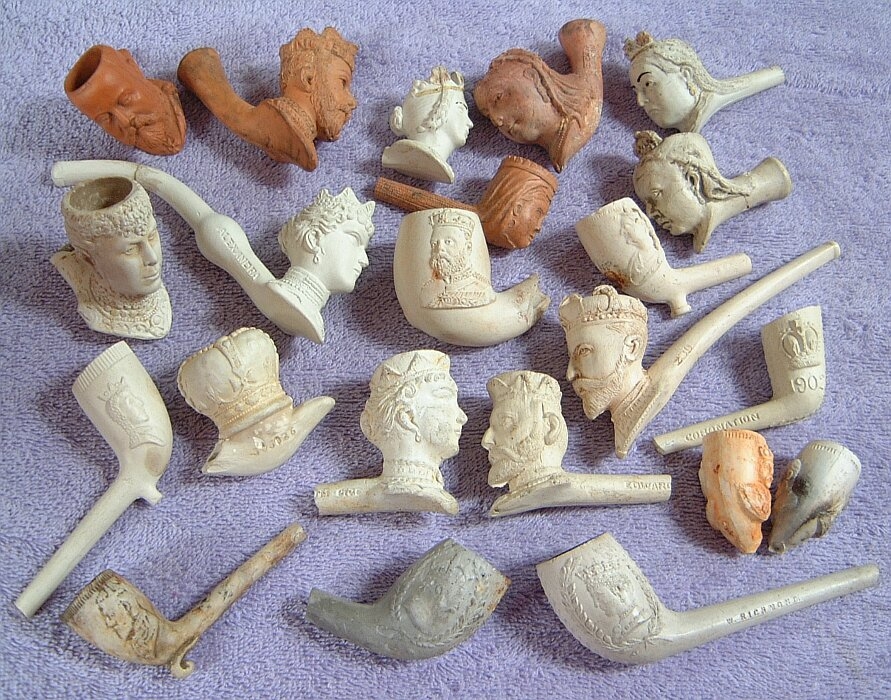
Bird Claw Pipes
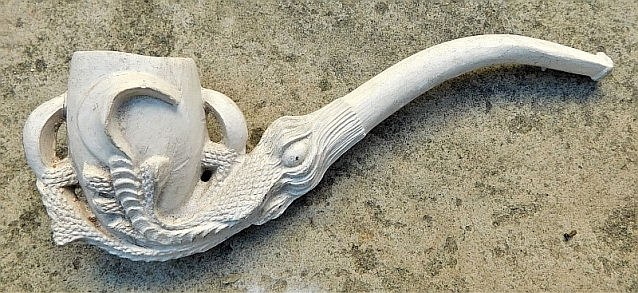
Other bird claws include
chicken claws and some are so simple and badly made they only just look
like
bird claws. Early claw pipes seem to have come into fashion c.1840's and
were popular through to the 1930's. They are still made today.

There are so many bird claw pipes you could create a collection just from this one theme!

Horse
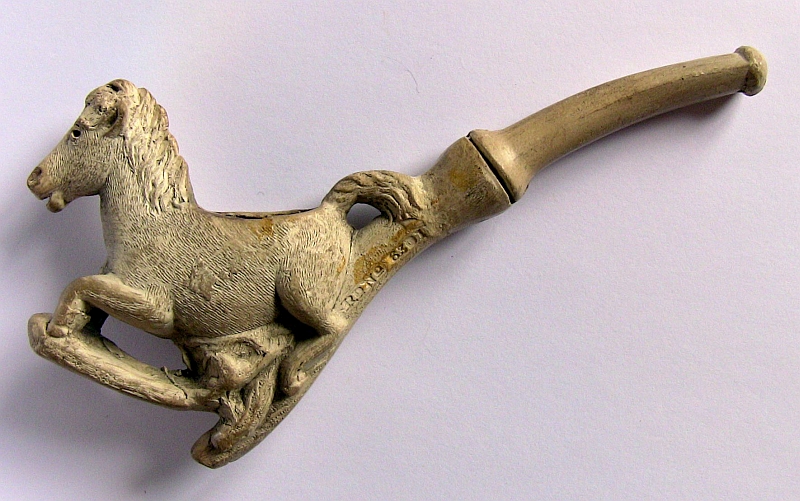
Miniature and Toy Pipes
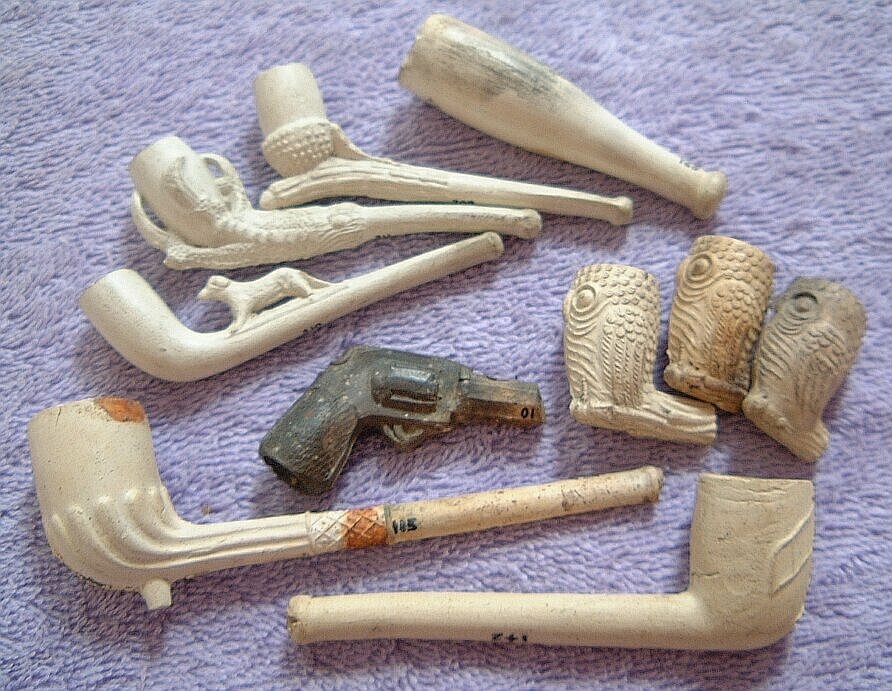
The style of this group with
the
little rounded bowls and arched stems were made by English firms such as
the Southern Family of Broseley but also imported from Germany (the
word Germany
sometimes seen on the stem). They come in several colours of clay
including red and brown, also with a glazed varnish on them. Subjects include, flowers, baskets, rabbits, footballers, dotted pattens etc.

Giant Pipes
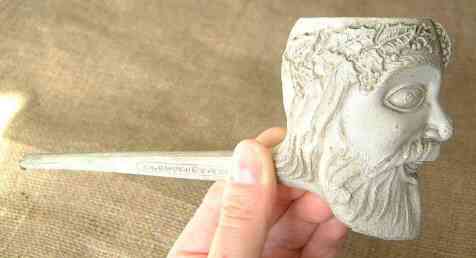
Here we have the large black man which is also sometimes painted black or with coloured eyes and mouth. The very nice Father Christmas design was made by Charles Crop of London and there is Fred Archer, the jocky who rode on Donavan.
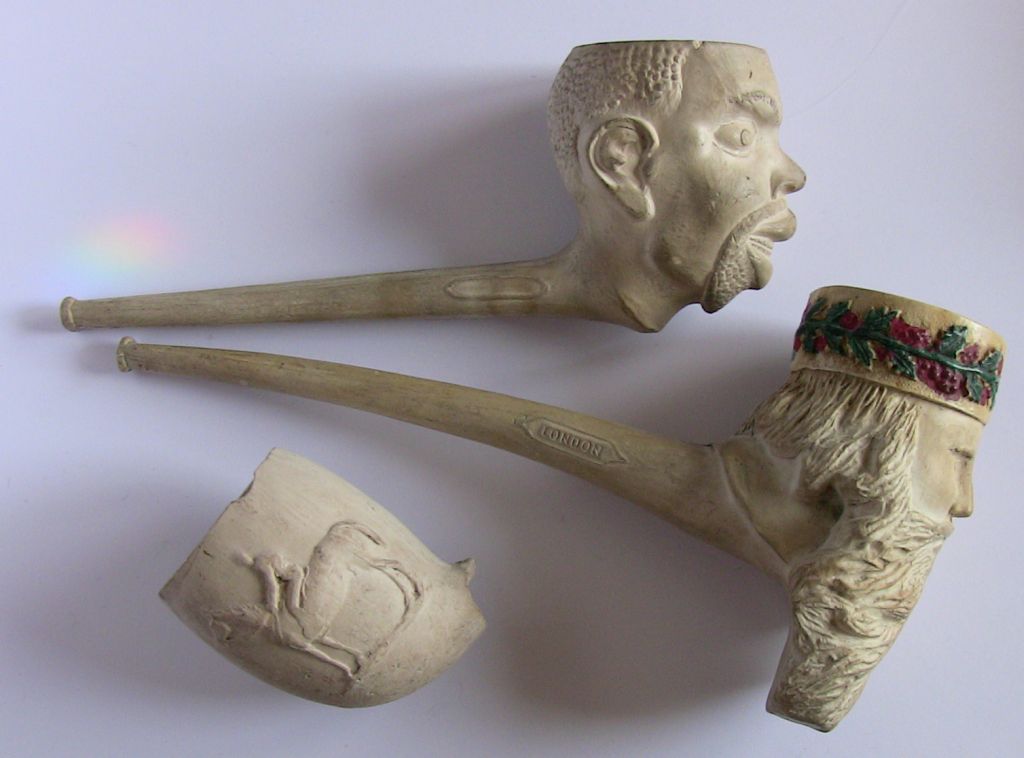
Several versions of large pipe also show the London Great Exhibtion Building as well as the Building at Crystal Palace. I am sure these pipes were also shown off as these exhibitions too. Again these were made in large numbers and often come up for sale.
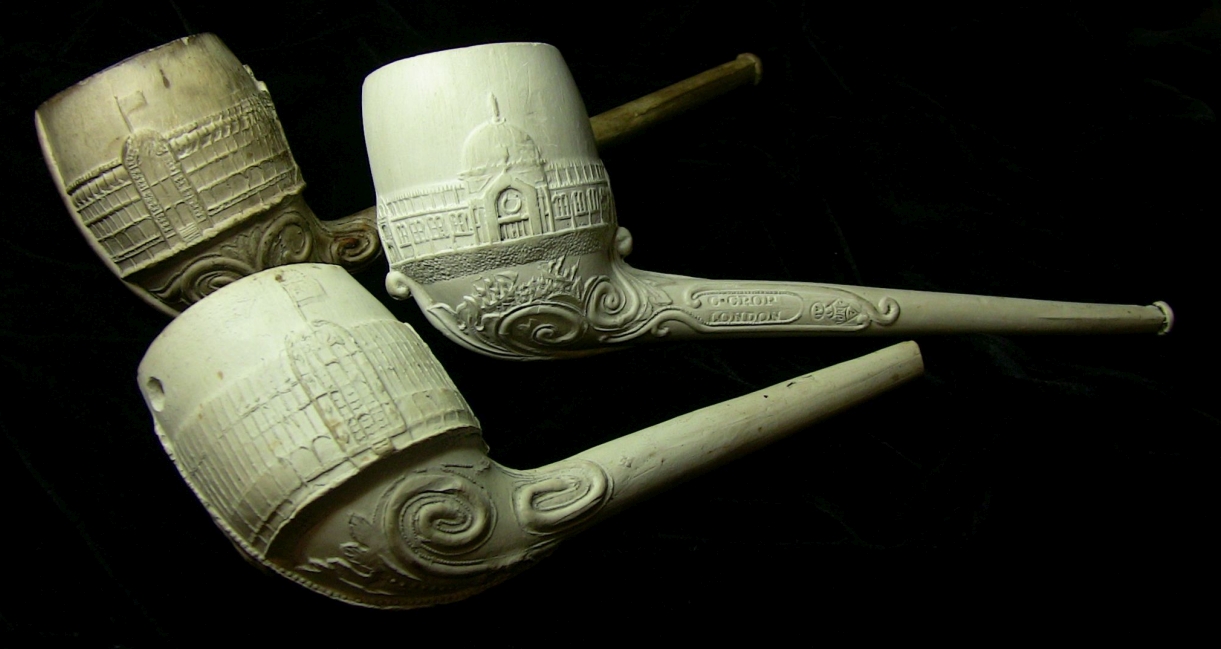
Dutch Clay Pipes
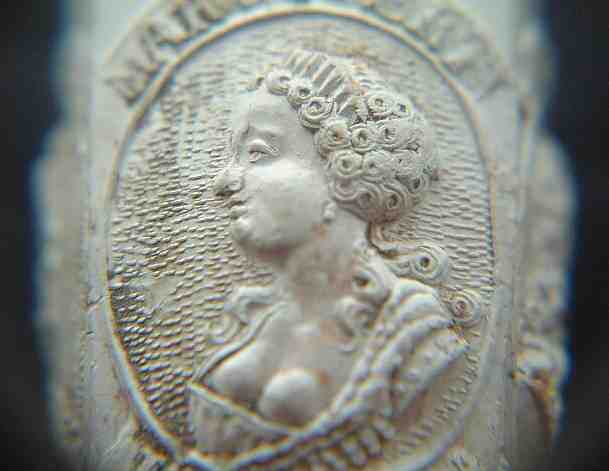
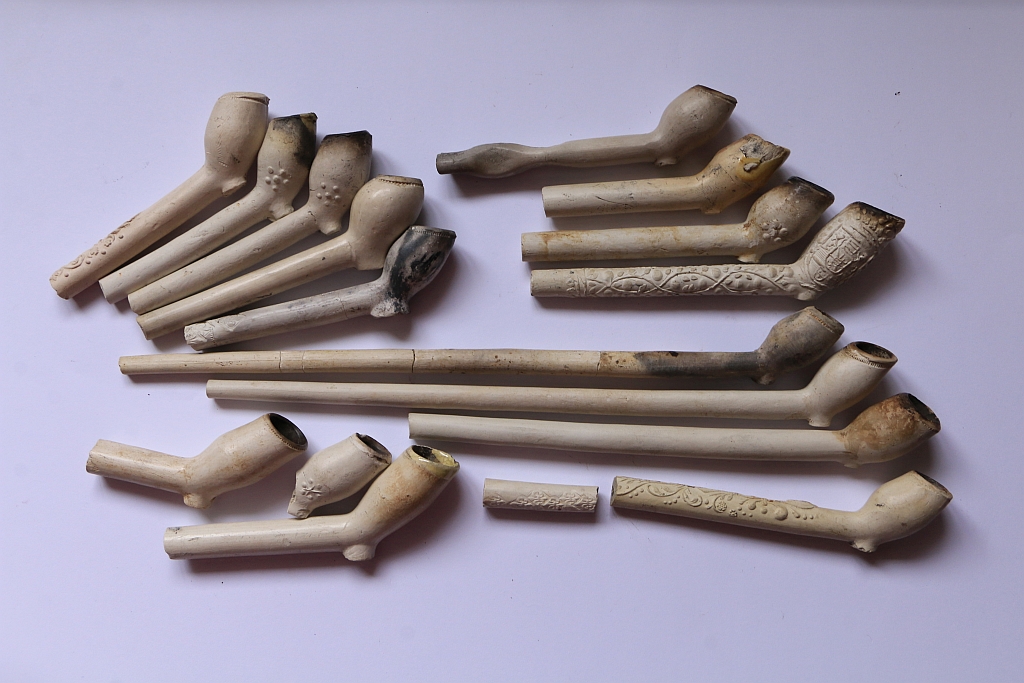
Dutch pipes of the 17th Century shown here are often very well made with highly burnished surfaces that feel very smooth to the touch. Some have patterns rolled on the stems.

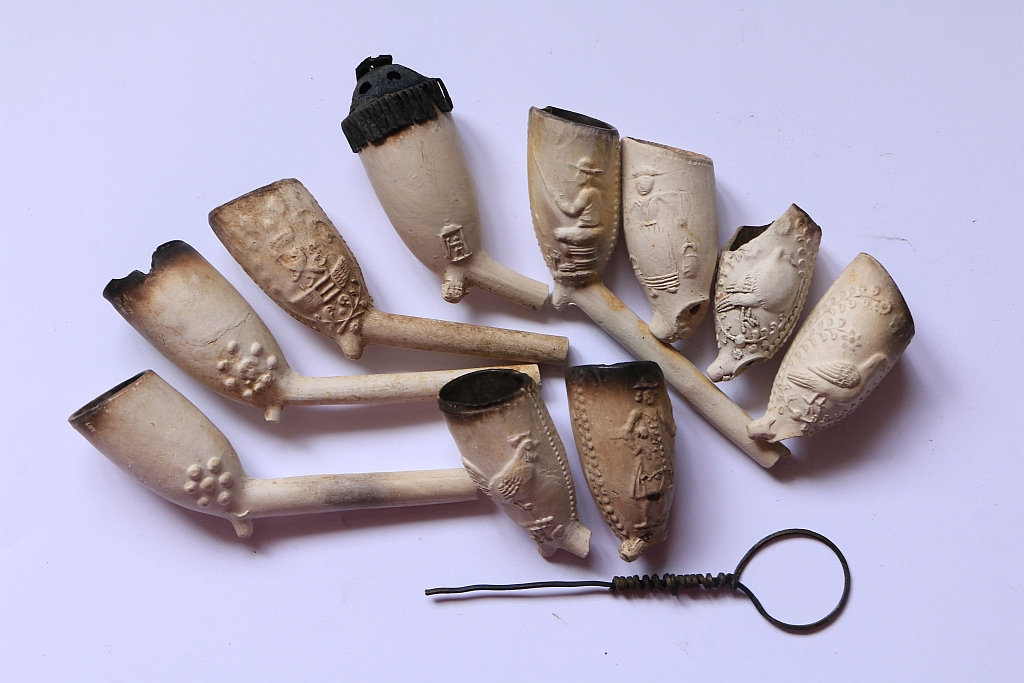
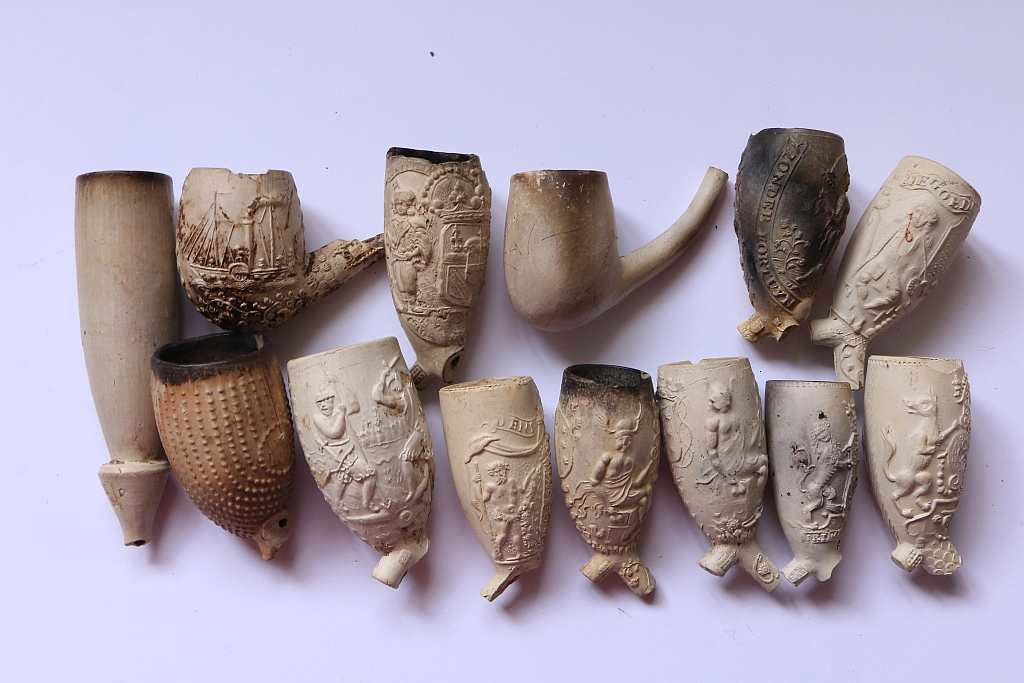
Fish Pipes
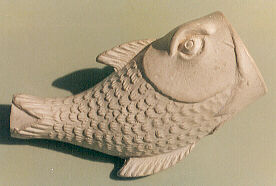
There are so many variations of fish pipes you could make a collection just out of them! Some show just the fish, others look mre like sea monsters with fish scales. Some have cherubs riding on them too.
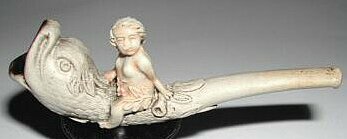
Flowers and Plants
Floral design depicting a tulip and with
coloured glazes. Made by the factory of L.Fiolet of St Omer in France.
Lots of botanical theme pipes exist and there are some amazing coloured
examples. They came into fashion in the c.1840's and popular from then
on.
There are some early Dutch pipes with flower designs and pipes with
makers marks in flower design but these are not to be confused with the
main 19th century
variations.

All the coloured pipes which usual originate from France or Germany were hand painted so all though they were mass produced items the colours add a nice crafted touch and as the pipe was smoked the clay turned brown which can make the colours stand out more.
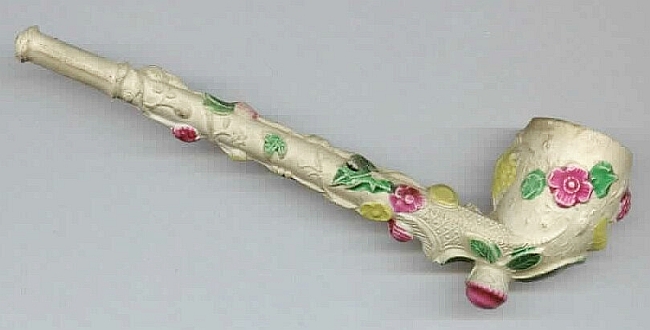
Pipes by John Pollock & Co of Manchester, England.
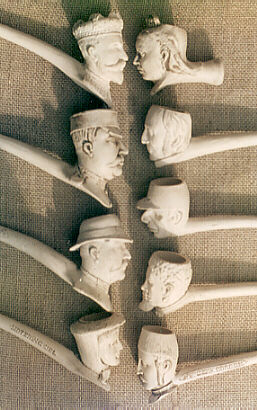
French Figurals
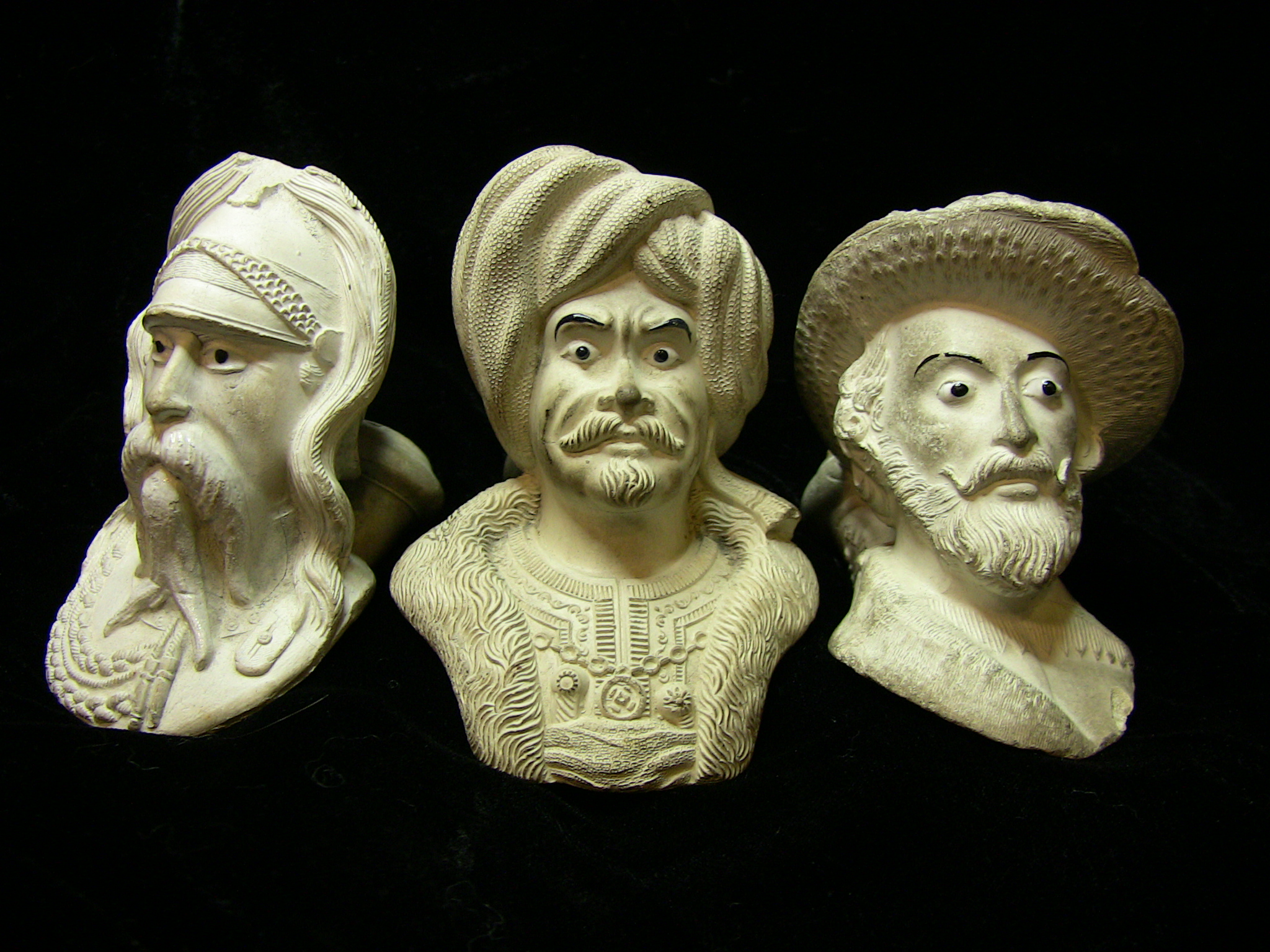
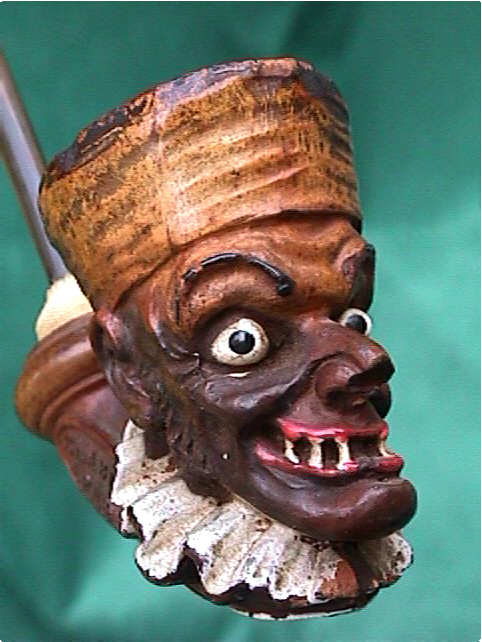
Dantan by Gambier

The Duchess of Devon by Charles Crop
Charles Crop (& Sons) was a famous
London firm who produced many elaborate well made pipes
from the 1840's until 1924. They designed large numbers of very
realistic looking portrait pipes as well as animals, bird claws and
large display pieces.
Often the designs have registration numbers on them and some were copied
by other makers. This marvellous pipe is thought to depict the 18th
Century
Duchess of Devon, Georgiana Cavendish with her very
large fashionable hat as painted by Gainsborough. Peter Hammond, a clay
pipe collector with much knowledge, has done very detailed studies of
Crop pipes.
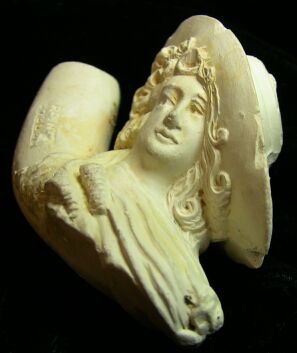
Jacob Pipes

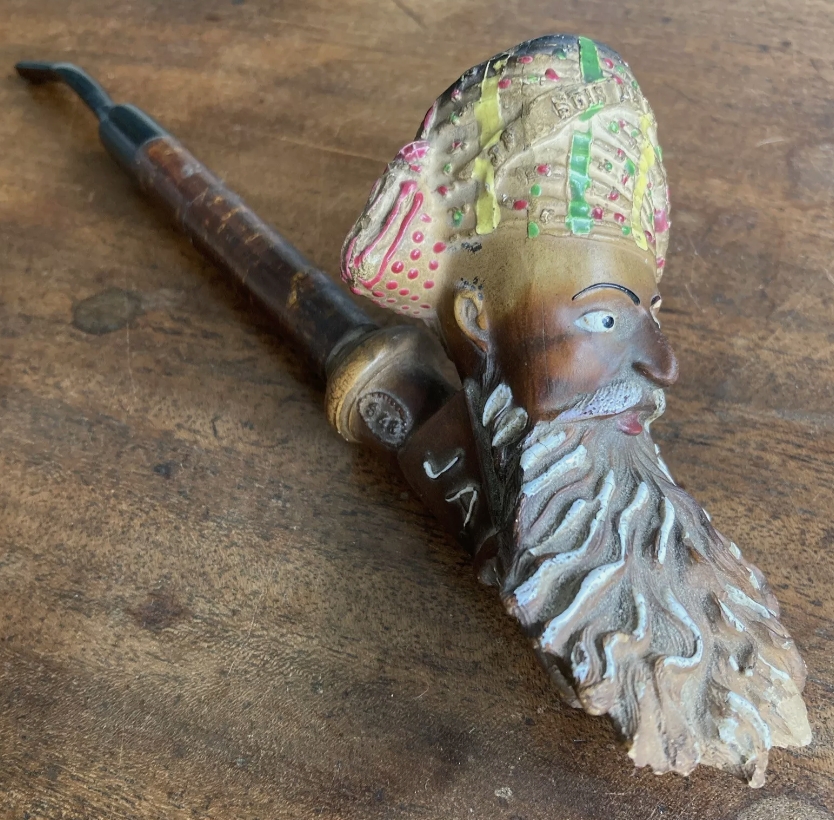
More Figural Pipes
French, Dutch and English figural pipes
made between about 1860 and 1925. Animals, Birds, Fish, Famous people
and various creatures.
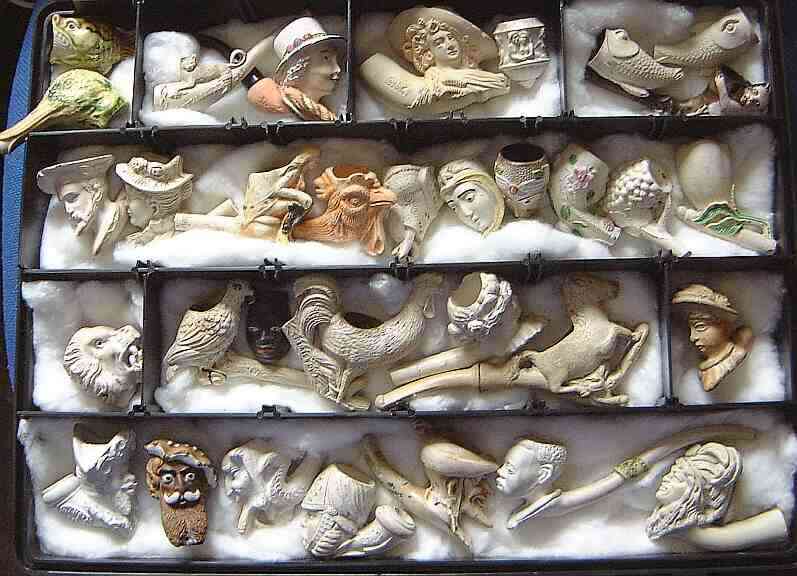
My 2016 Exhibition
From January to March 2016 I was
invited to do an exhibition of some of my collection at Exeter's Royal
Albert Memorial Museum here in Devon.
The exhibition went very well and I was also invited to do a radio
interview for BBC Radio Devon as well as a TV feature for BBC Spotlight.

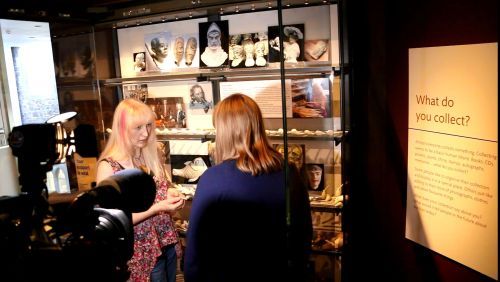
A Few Books about Clay Pipes...
There seems to be several types of book on the subject - older 1970's books which introduce the topic as a hobby or as part of bottle collecting. These are simple but a great start. Then there are archaeological reports which can be very detailed and heavy going to absorb though very informative. Other books which cover makers marks. Small published papers which can be found sometimes printed within large archaeologcial reports or in newsletters. Also there are a few good books on French pipes and Dutch pipes (often written in those languages). I will not cover them all here, just a few I like.
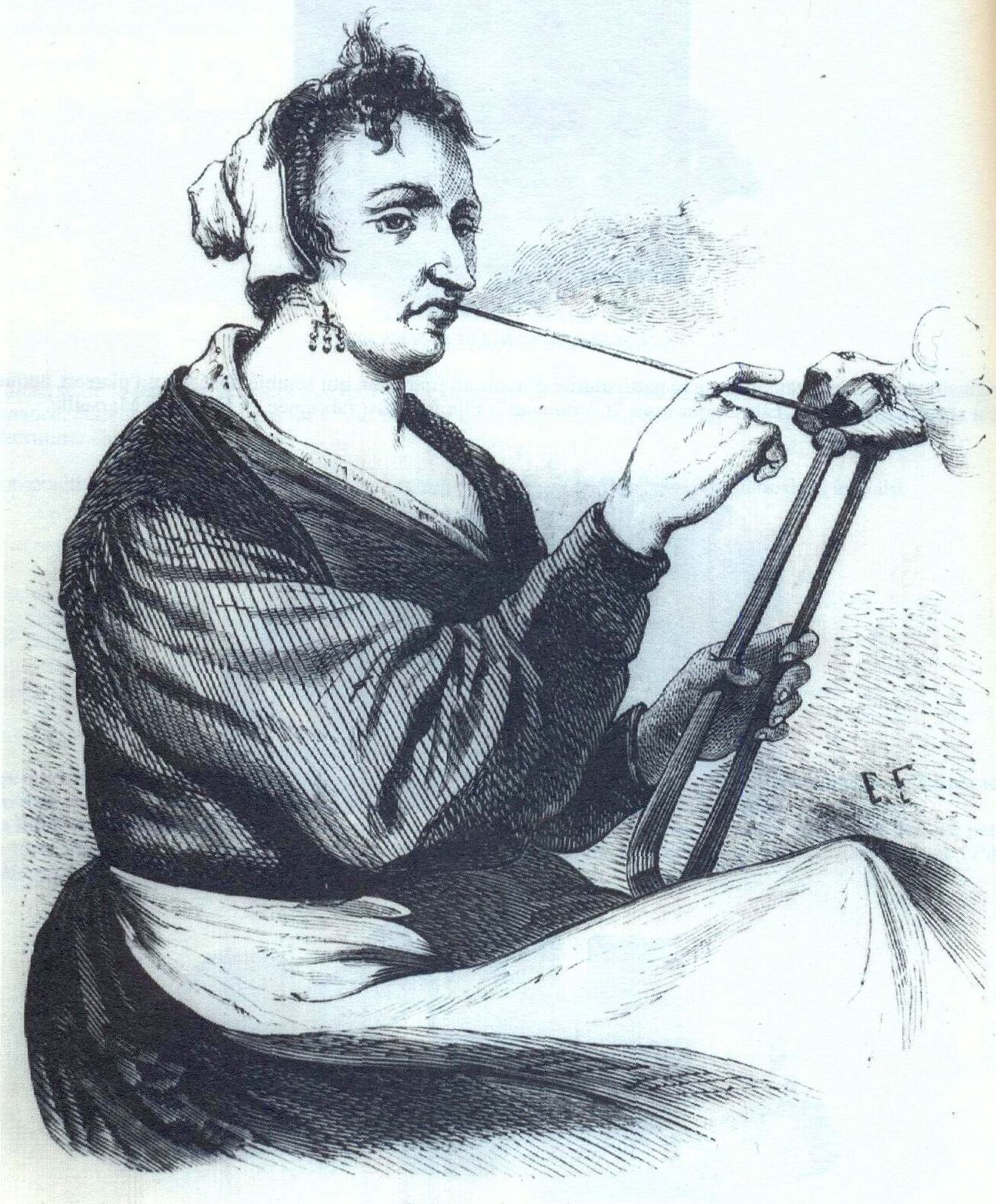
CD ROM Clay Pipe Picture Library
Originally published by Dawnmist Studio. The CD contains thousands of images gathered over 25 years and put into catagories for easier searching. There is no text information but with so many images it gives a good indication of the styles and themes a collector can expect to find globally and helps archaeologists to find more complete examples.
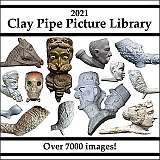
Clay Tobacco Pipes by Eric G. Ayto. Shire Album 37.
ISBN 0-7478-0248-3 (2002)

The Dynamics of Regionalism and Trade: Yorkshire Clay Tobacco Pipes c.1600-1800 by S.D. White 2004
British Archaeological Report Series 374 - The Archaeology of the Clay Tobacco Pipe XVIII
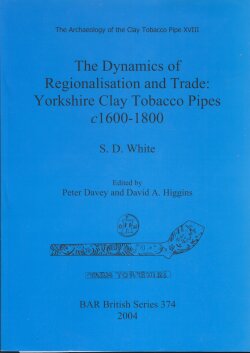
La Pipe En Terre by Maurice RAPHAEL,
ISBN 2-909132-00-5 (1991)
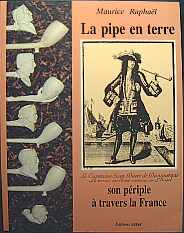
The Intriguing Design of Tobacco Pipes by Benedict Goes (1993)
ISBN 90-70849=19=4

Merken Van Goudse Pijpenmakers 1660-1940 by D.H.Duco (1982)
A pocket sized book in Dutch language that records the numerous pipemakers marks found on the base of Dutch pipes from Gouda. A history of how the marks came into being is explained with some plates. The majority of the book is devoted to the marks which are carefully drawn and information of the maker and date where known is given. This book is particularly useful to archaeologists. More information from: info@pijpenkabinet.nl
NOTE: This book is completely in Dutch language. 17 x 12cm size with 128 pages
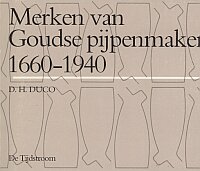
Discover the magic of Studio Devona!
Immerse yourself in traditional crafts, various creations and interests rooted in and inspired by the ancient landscape of Devonshire.
Get in Touch with
Devona
Lea-Croft Cottage, Cheriton Bishop, Devon. EX6 6JH